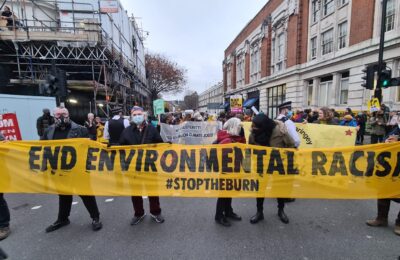Sean Thompson writes:
 Over the past few years, much has been made (particularly by fossil fuel industry lobbyists) of the potential for the development of a ‘hydrogen economy’. The great attraction of hydrogen to the proponents of the status quo, whether Tory or Labour, is that it feeds into their fantasies about ‘green growth’ – a lower carbon version of business as usual. Hydrogen, it is claimed, could replace fossil fuels as an energy source, not only for energy intensive heavy industries like steel and glass production but also for powering cars, public transport, aviation and home heating. However, as the estimable Ben Goldacre said of other sensational claims “I think you’ll find it’s more complicated than that.”
Over the past few years, much has been made (particularly by fossil fuel industry lobbyists) of the potential for the development of a ‘hydrogen economy’. The great attraction of hydrogen to the proponents of the status quo, whether Tory or Labour, is that it feeds into their fantasies about ‘green growth’ – a lower carbon version of business as usual. Hydrogen, it is claimed, could replace fossil fuels as an energy source, not only for energy intensive heavy industries like steel and glass production but also for powering cars, public transport, aviation and home heating. However, as the estimable Ben Goldacre said of other sensational claims “I think you’ll find it’s more complicated than that.”
Hydrogen comes in three colours:
- Grey: Hydrogen produced from a natural gas feedstock.
- Blue: Hydrogen produced from a natural gas feedstock with capture of the by-product CO2.
- Green: Hydrogen produced by splitting water molecules through electrolysis using renewable energy sources
According to the International Energy Agency, 95 million tonnes (Mt) of hydrogen is produced worldwide and 99% is ‘grey’. In 2022, hydrogen production generated more than 900 Mt of CO2 emissions – more than the entire global aviation industry footprint of almost 800 Mt. At the same time, less than 0.1 per cent of the world’s hydrogen production (less than 0.08 Mt) was green hydrogen.
In the run-up to COP28, its president, Al Jaber, Minister of Industry and Advanced Technology of the United Arab Emirates and head of theAbu Dhabi National Oil Company (ADNOC), repeatedly urged agreement by governments to almost double current global hydrogen production from 95 Mt to 180 Mt per year by 2030. Reaching that goal with green hydrogen would require a 2,068-fold production increase in seven years. This is, to say the least, a highly unlikely scenario, so the reality would be a massive boom in grey hydrogen and good news for ADNOC and the rest of the fossil fuel industry.
The idea that green hydrogen can replace the energy currently provided by fossil fuels for most transport and for domestic heating/cooling is fanciful in the extreme. Even more fanciful is the suggestion currently being promoted by aviation industry lobbyists that hydrogen might be used to power zero carbon flying, either by using it to manufacture yet to be discovered ‘alternative’ aviation fuels or via hydrogen fuel cells for electrically powered aircraft.
- A kilogram of hydrogen – the unit of measurement most often used – has an energy value of about 33.3 kWh.So a tonne of hydrogen delivers about 33 MWh and a million tonnes about 33 terawatt hours (TWh). To provide a sense of scale, the UK uses about 300 TWh of electricity a year.
- Many estimates of the eventual demand for hydrogen are of at least 500 Mt. A world that requires 500 Mt of hydrogen will need to produce 22,000 TWh of green electricity a year just for this purpose. 22,000 TWh is roughly equivalent to 15% of total world primary energy demand, and today’s global production from all wind and solar farms is a little more than 10% of this figure.
- A huge global increase in green energy generation capacity will thus be needed to produce 500Mt of hydrogen. As an example of the scale of of increase needed, for every gigawatt of capacity, a well-sited North Sea wind farm will provide about 4,400 GWh a year, or 4.4 TWh. At a future efficiency level of about 75%, this will produce around 100,000 tonnes of hydrogen. Therefore most of the UK’s current North Sea wind output from 13 GW of wind would be needed to make just one million tonnes of H2.
- The amount of electrolysis capacity required to make 500 million tonnes of hydrogen a year depends on how many hours a year that the electrolysers work and how efficient they are. If we assume an average of about 60% of the time, at a prospective 75% efficiency level, then the world will need around 4,500 gigawatts of electrolysis capacity – about five hundred times what is currently in place.
While the creation of such a vast new industry is clearly possible over a period of time, particularly if such an huge initiative isn’t left to the hidden hand of the market or the not so hidden hands of the fossil fuel industry, it is clearly not possible in the time left to us to avoid global catastrophe. Nonetheless, the use of hydrogen and the development of green hydrogen production capacity will be essential if we are to move to a zero carbon economy – but because the supply of truly clean hydrogen is going to be limited – certainly for the next two or three decades – it should be prioritised for uses where there are no alternatives.
In an analysis for Bloomberg in 2020, Michael Liebreich pointed out that hydrogen has serious limitations in many applications:
“as an energy storage medium, it has only a 50% round-trip efficiency – far worse than batteries. As a source of work, fuel cells, turbines and engines are only 60% efficient – far worse than electric motors – and far more complex. As a source of heat, hydrogen costs four times as much as natural gas. As a way of transporting energy, hydrogen pipelines cost three times as much as power lines, and ships and trucks are even worse.”…“What this means is that hydrogen’s role in the final energy mix of a future net-zero emissions world will be to do things that cannot be done more simply, cheaply and efficiently by the direct use of clean electricity and batteries”
The Government’s own Climate Change Committee (CCC) analysis in their 6th Carbon Budget Report, showed that hydrogen production is not the best use of renewable energy if it can be used in other ways, thus we should only use hydrogen where it is near-impossible to reduce demand or use electricity directly. As a leading analyst at CCC has put it: “In our view, you should be looking to electrify wherever you can. Where that’s prohibitively expensive , or where that’s not feasible, that’s the role that you’re looking for hydrogen.”
The EU Energy Cities network has actually put together a hierarchy of uses for hydrogen which seems a good starting point. A is use by energy intensive heavy industrial processes needing high temperature heat like steel, chemicals or glass, B is grid-level storage – storing otherwise ‘waste’ energy produced by off shore wind during periods of low electricity demand, C, D and E for powering heavy transport – shipping, trains and buses/HGVs respectively. Way down at F and G are hydrogen fuel cells for cars and home heating. Speculative technologies like synthetic aviation fuel don’t even figure on the list.
It’s important that an incoming Labour government doesn’t commit to high cost options involving blue – or even grey – hydrogen, which would suit the gas industry, but which would do little or nothing to reduce CO2 emissions. And it’s equally important that governments realise that, whilst green hydrogen is vital, it will not be available in infinite quantities and isn’t going to be a panacea for all the delivery challenges and investments that need to be made across buildings, transport and industry.
Despite this, both Tory and Labour politicians, along with a rag bag of lobbyists for various techno-fix solutions, from nuclear to carbon capture and sequestration and the wilder regions of geo-engineering, try to avoid the reality that there are no silver bullets that will somehow exempt capitalism from the laws of physics.
For example, in 2020, the Tory government launched its ‘Ten Point Plan for a Green Industrial Revolution’, which included a commitment to investing up to £500m in new hydrogen technologies. It claimed that the energy produced could be used “to carry on living our lives, running our cars, buses, trucks and trains, ships and planes, and heating our homes while keeping bills low.” It announced that as part of a trial of hydrogen heating, two ‘hydrogen villages’ of around 1,000-2,000 homes, in Whitby, near Ellesmere Port and Redcar, Teeside, where the homes would be converted to hydrogen for heating instead of natural gas. In July this year, the plans for the Whitby pilot were abandoned in the face of local opposition and in December the proposed Redcar pilot was also scrapped. This leaves National Grid’s £32m pilot project in Fife, where about 300 homes in Methil and neighbouring Buckhaven in Levenmouth were due to be converted from natural gas to hydrogen next year, as only remaining attempt in the UK by energy industry to show that hydrogen is a viable (and cost effective) alternative to natural gas for domestic heating. Unsurprisingly, the project is much delayed and the are doubts whether it will actually get going. Ofgem has warned that “delay in the commencement of this project would materially impact the evidence base for an energy system transition to hydrogen as a means of decarbonising heat and industry”.
Capitalism, dependent as it is on the constant and infinite expansion of the production of commodities, is being forced by the inescapable reality of climate change to move from denial to a (partial) recognition of the terrible price that humanity and the planet as a whole is beginning to have to pay. However, its enthusiasm for the mirage of ‘green growth’ is making it grab more and more desperately at technological straws – some of which, like green hydrogen, have the potential to actually play a valuable, if limited, role in combatting global heating.



